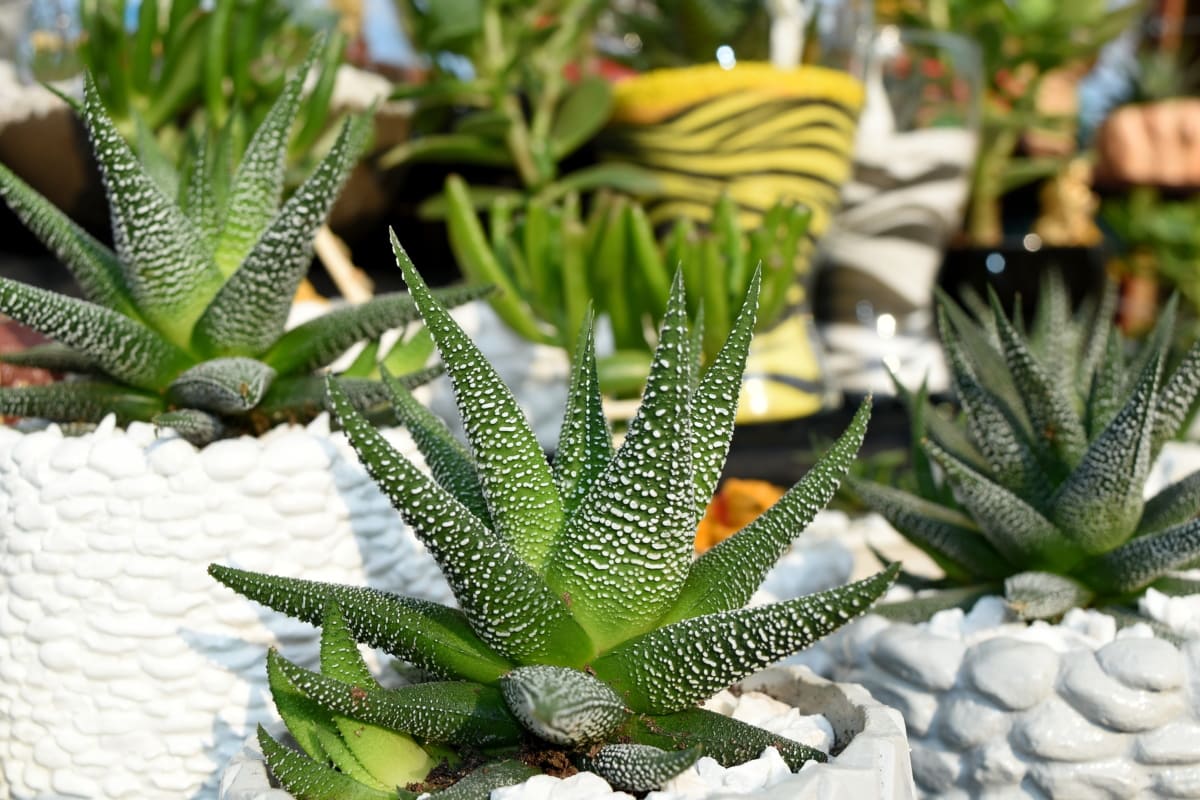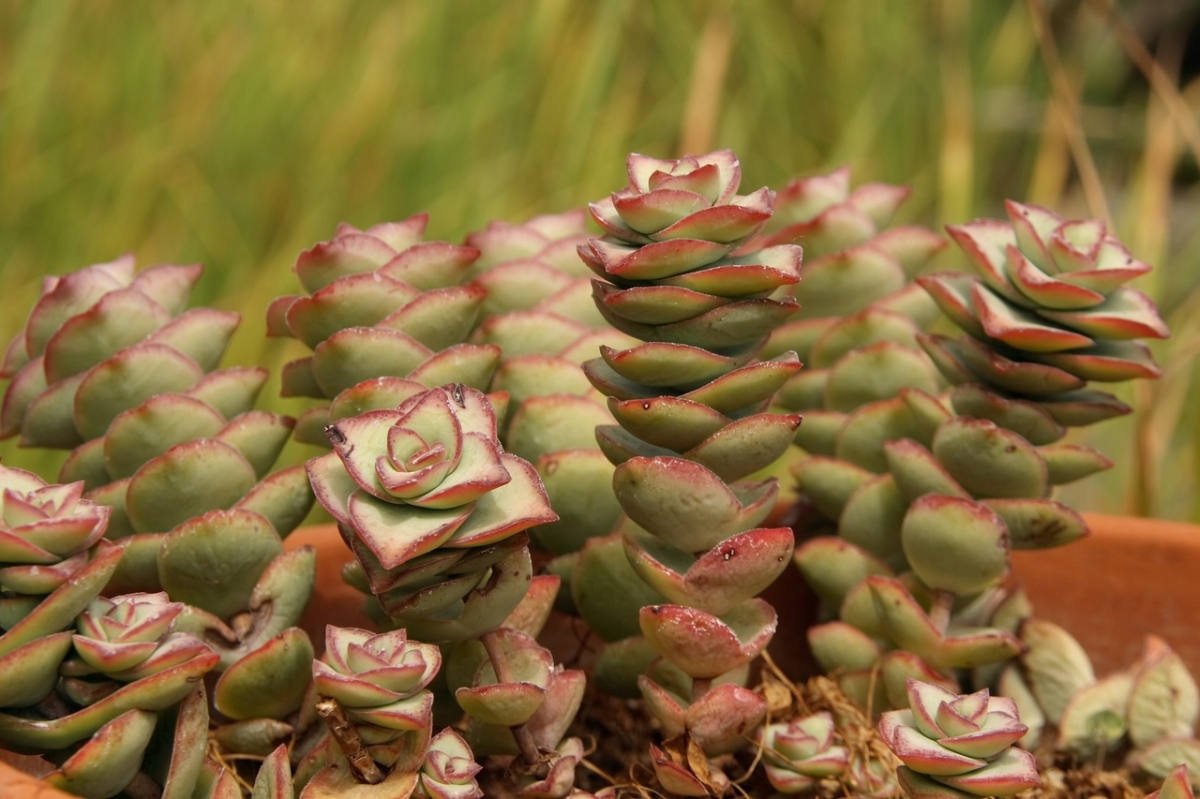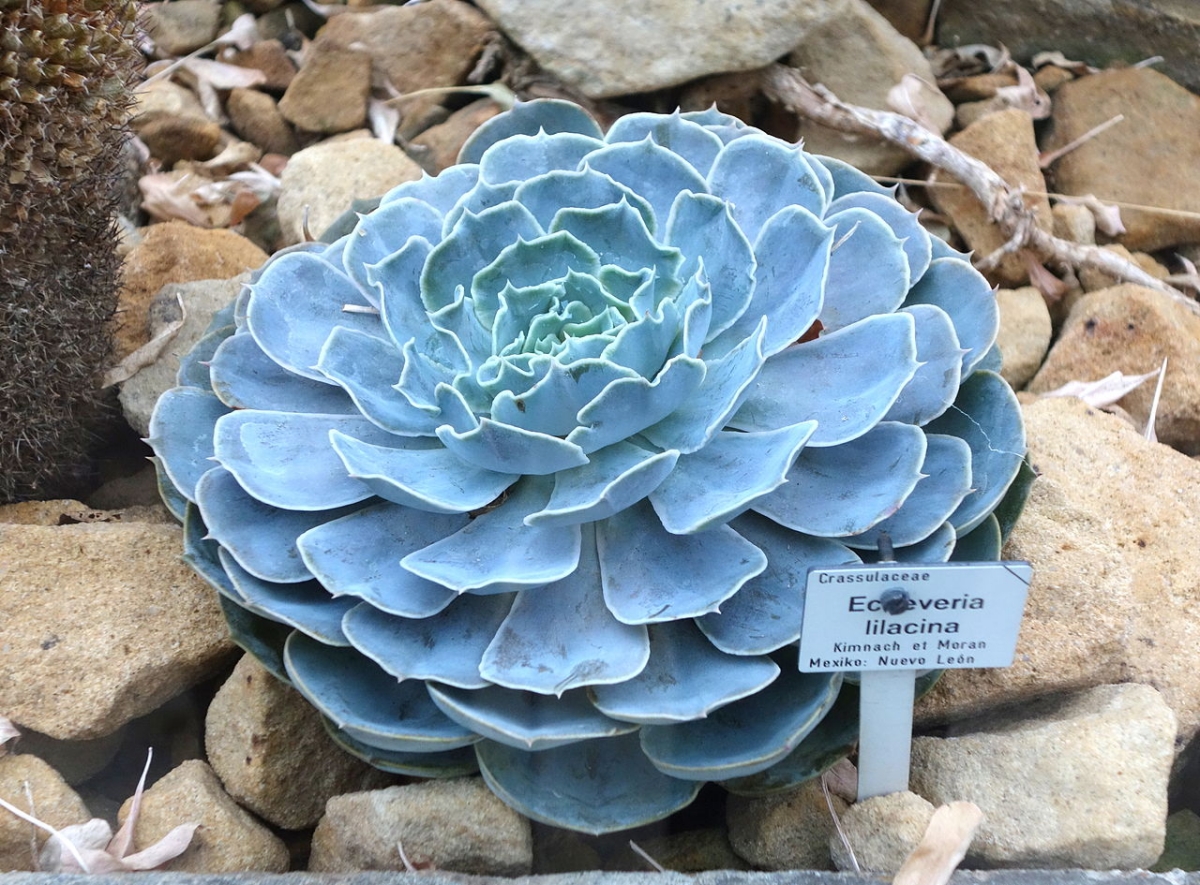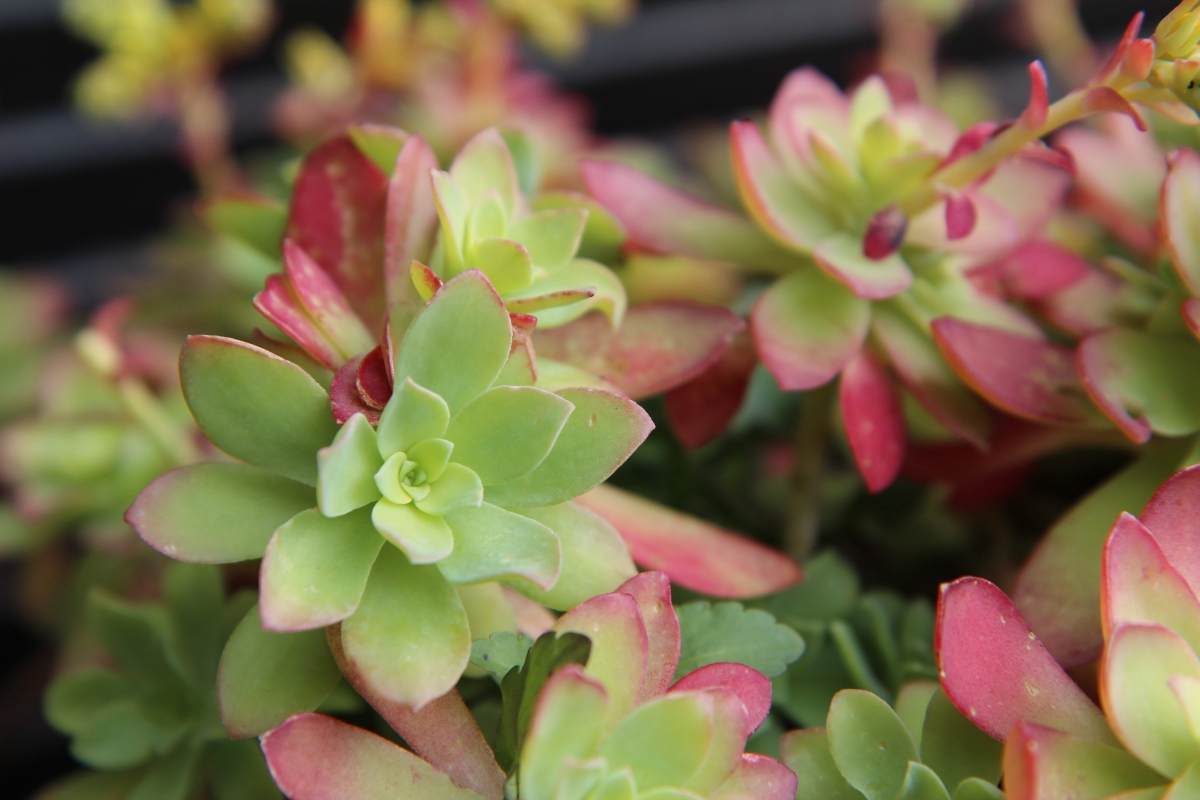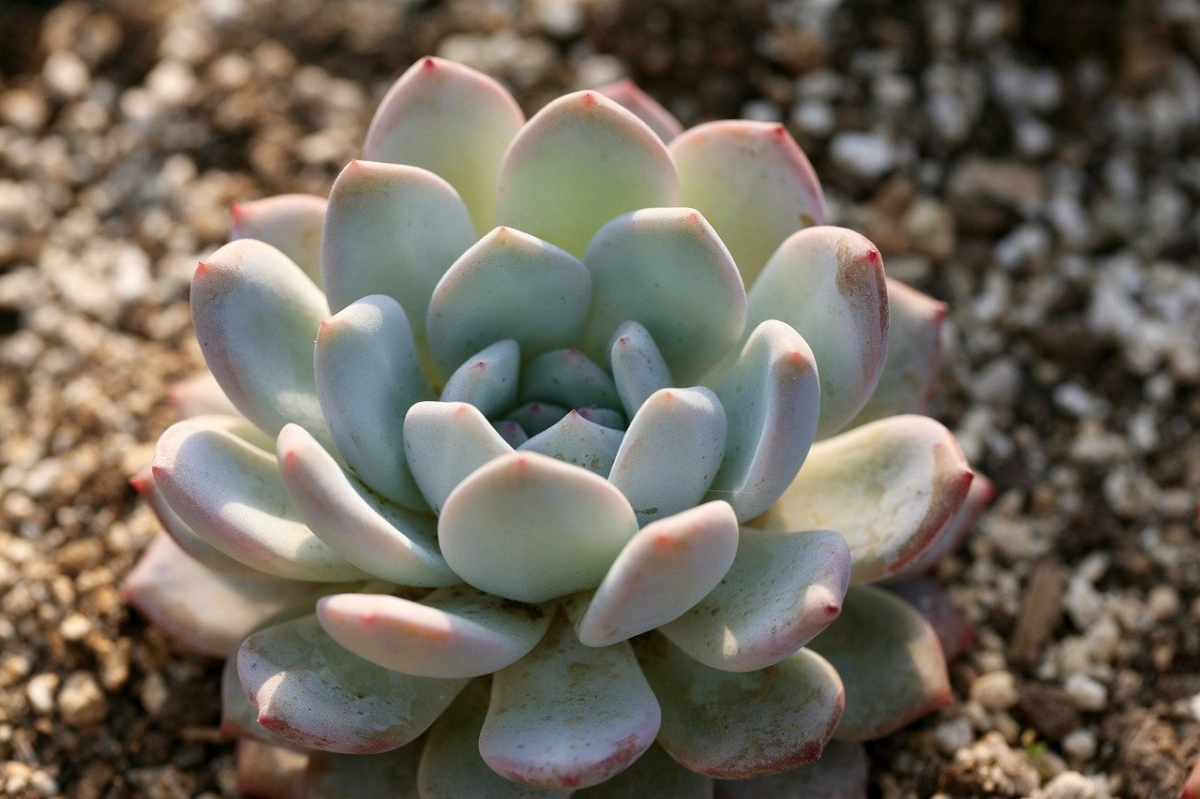
Are crass and succulents the same? The answer can both be affirmative and negative, because although they are closely related, it would be a mistake to think that succulents are just succulents despite the fact that today there is still a tendency to think that both terms are synonymous.
But regardless of their characteristics, both are plants capable of withstanding more or less long periods of drought, especially when they are adults. In addition, they can be used to create very beautiful compositions, ideal for decorating a garden or the interior of the house. Let's know more about them.
What are succulents and succulents?
Notice that I have changed the order of the words, because when we talk about succulents we refer to all those plants that have converted some part of their body (leaves, stems, and / or roots) into water stores. That is to say, we are talking about cacti and succulents. Often also other types of plants are included, such as agaves, some euphorbias (such as Obese euphorbia), and even certain trees and shrubs, such as the Pachypodium or the Adenium obesum, better known as desert rose.
By contrast, 'true' succulent plants are only those that are part of the Crassulaceae familylike the Sedum, the Sempervivum, the Cotyledon, the Rhodiola and of course the Crassula. Now, in popular language we also include in this group any succulent plant that does not have areolas -which is a characteristic of cacti-, such as Aloe vera.
Definitely:
- Succulent: cacti and succulents above all.
- Succulents: they are succulents that have fleshy leaves, lacking areoles and often also thorns. They are not cacti, which is why they are also known as non-cacti succulents.
What are the characteristics of succulents and succulents?
Succulents are those plants that are easy to distinguish: they have fleshy leaves, more or less thick, and do not have areoles.. They also do not usually have thorns, except for some such as the Euphorbia millii which it does have in its stems. Some are medicinal, such as Aloe vera or aloe vera, whose sap is used to hydrate the skin and treat any problems it may have; but the vast majority is used for decoration. Of course, there are several species, such as Lithops, which are a real delicacy for certain animals, such as snails.
On the other hand, Succulents are those plants, whether succulent or not, that live in conditions where the heat can be extreme and the drought can be very long., and that as a consequence, they may have: areoles, thorns, and / or some part of their body (or all of it) turned into a store of water. For example, the Lophophora or peyote cactus has a root system made up of thick roots.
Types of succulents and succulents
Next we are going to show you photos of succulents and succulents with which you can decorate your garden or patio:
Aloe vera
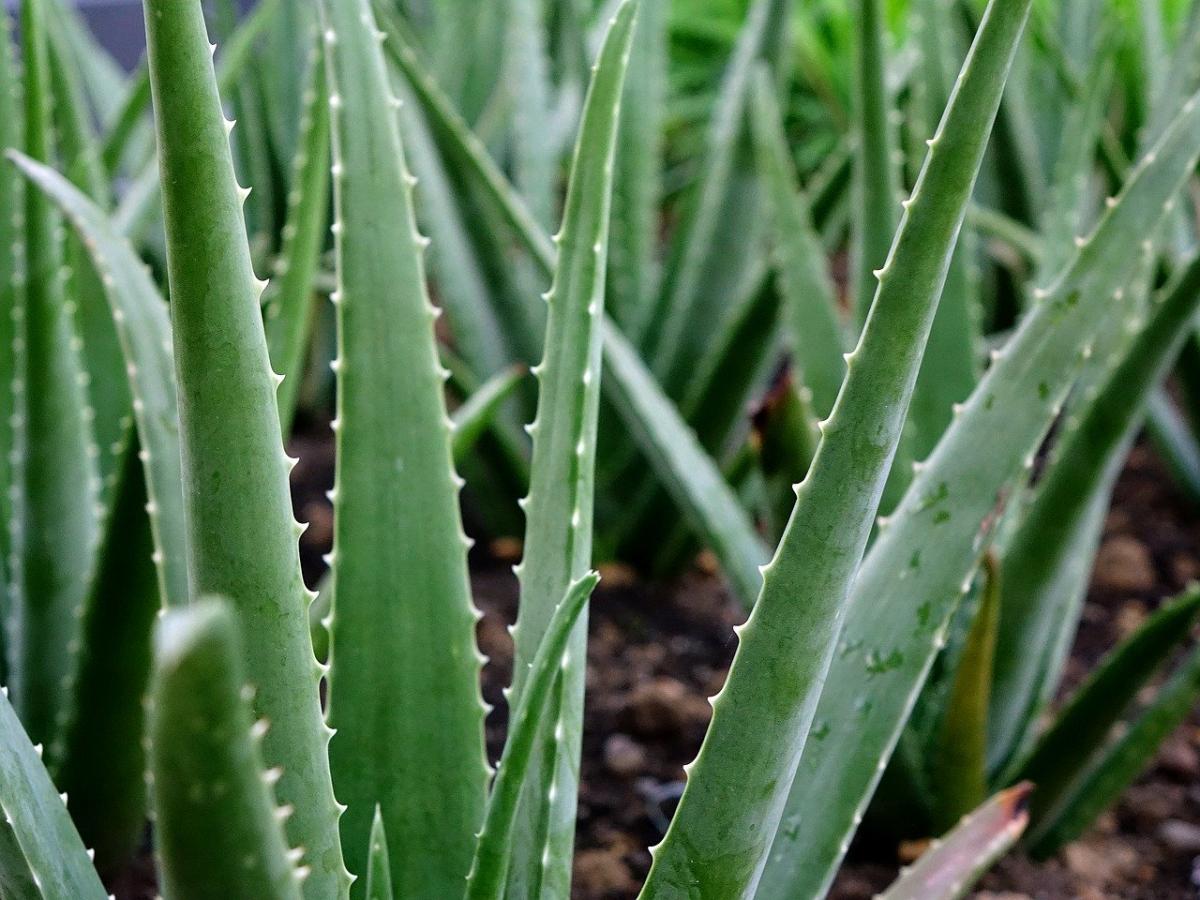
El Aloe vera or aloe it is a succulent with green leaves, although it may have white spots when young, which reaches a maximum height of 40 centimeters. Its flowers are yellow and spike-shaped.

The giant carnage (saguaros)

Image - Wikimedia / WClarke
El saguaros it is a columnar cactus that can exceed 12 meters in height, even reaching 14 meters. It has a very slow growth, taking up to 30 years to reach one meter. When young it has long and very sharp thorns, but when it matures it is easy to lose them. Its flowers are white and sprout at the top of the stem.
Crassula perforata
La Crassula perforata is a crass with stems that first grow straight but often end up prostrate. It reaches a height of up to 45 centimeters, and has fleshy leaves. Its flowers are cream-colored, and sprout in terminal panicles.
echeveria lilac
La echeveria lilac It is a crass plant that forms a rosette of silver leaves 12 to 25 centimeters in diameter and about 5 centimeters high. It blooms in winter and into early spring, producing pink or coral red flowers.
Echinopsis pachanoi (San Pedro Cactus)
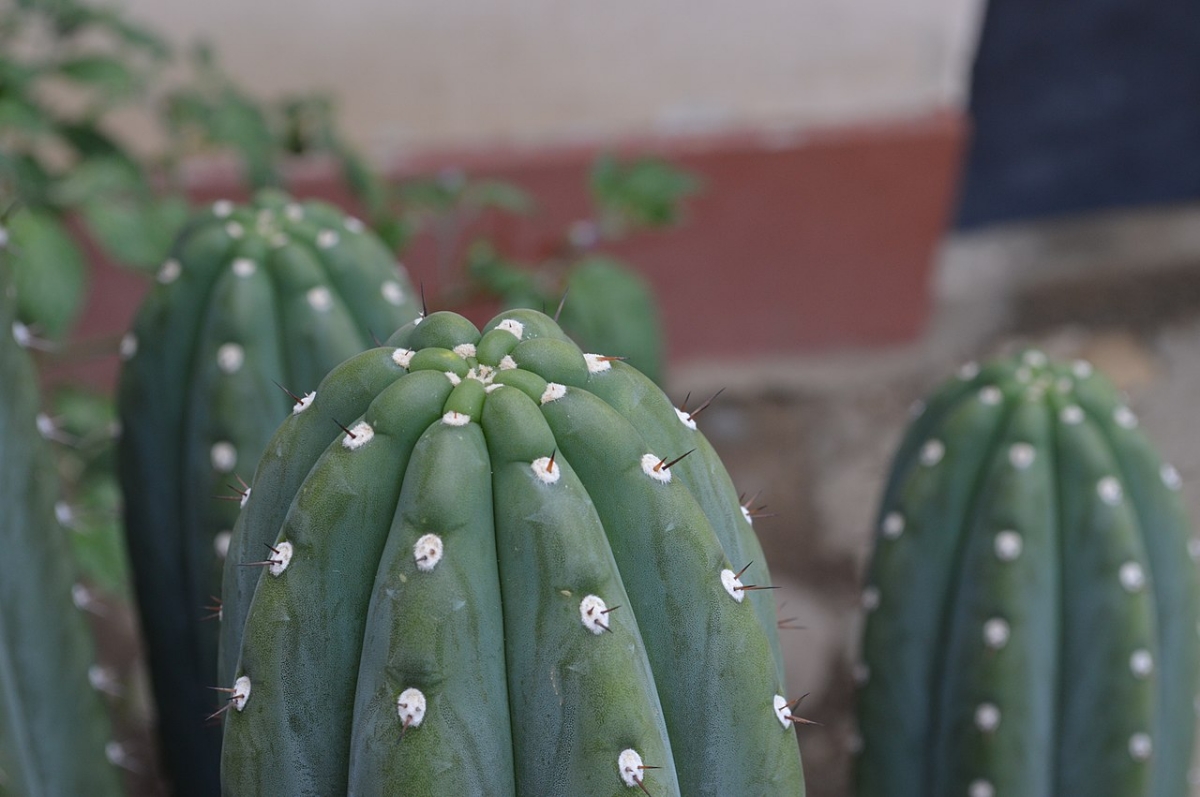
Image - Wikimedia / Cbrescia
El san pedro cactus it is a columnar succulent that reaches a height of 7 meters. Its stems are dark green, and spines that are usually short sprout from its areoles.. It blooms once adult, producing very fragrant white flowers on the upper part of the stem.
Lophophora williamsii (Peyote)
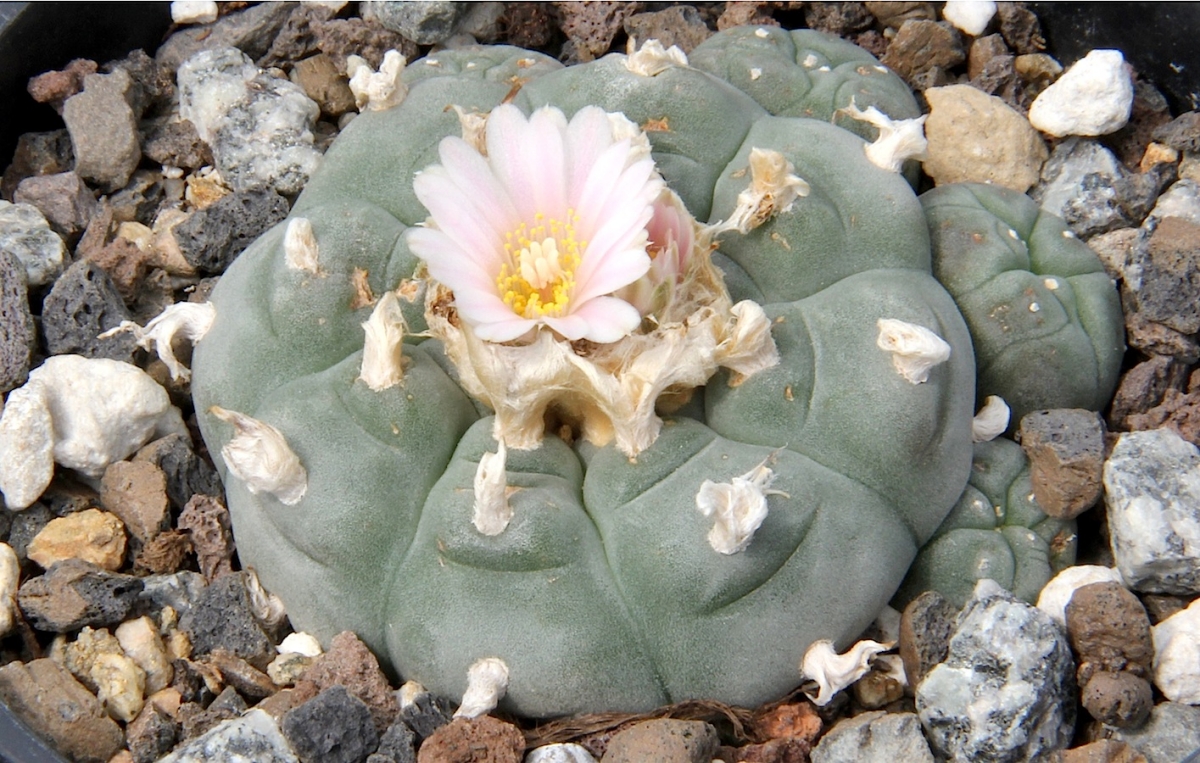
Image - Wikimedia / Michael Wolf
El peyote It is a globular dark green cactus that reaches a height of about 5 centimeters by about 10 centimeters in diameter. It grows very slowly, in fact it can take up to 30 years to reach its final size. Its flowers appear at the top of the stem, and they are pink.
Mammillaria gracilis (is now Mammillaria vetula)
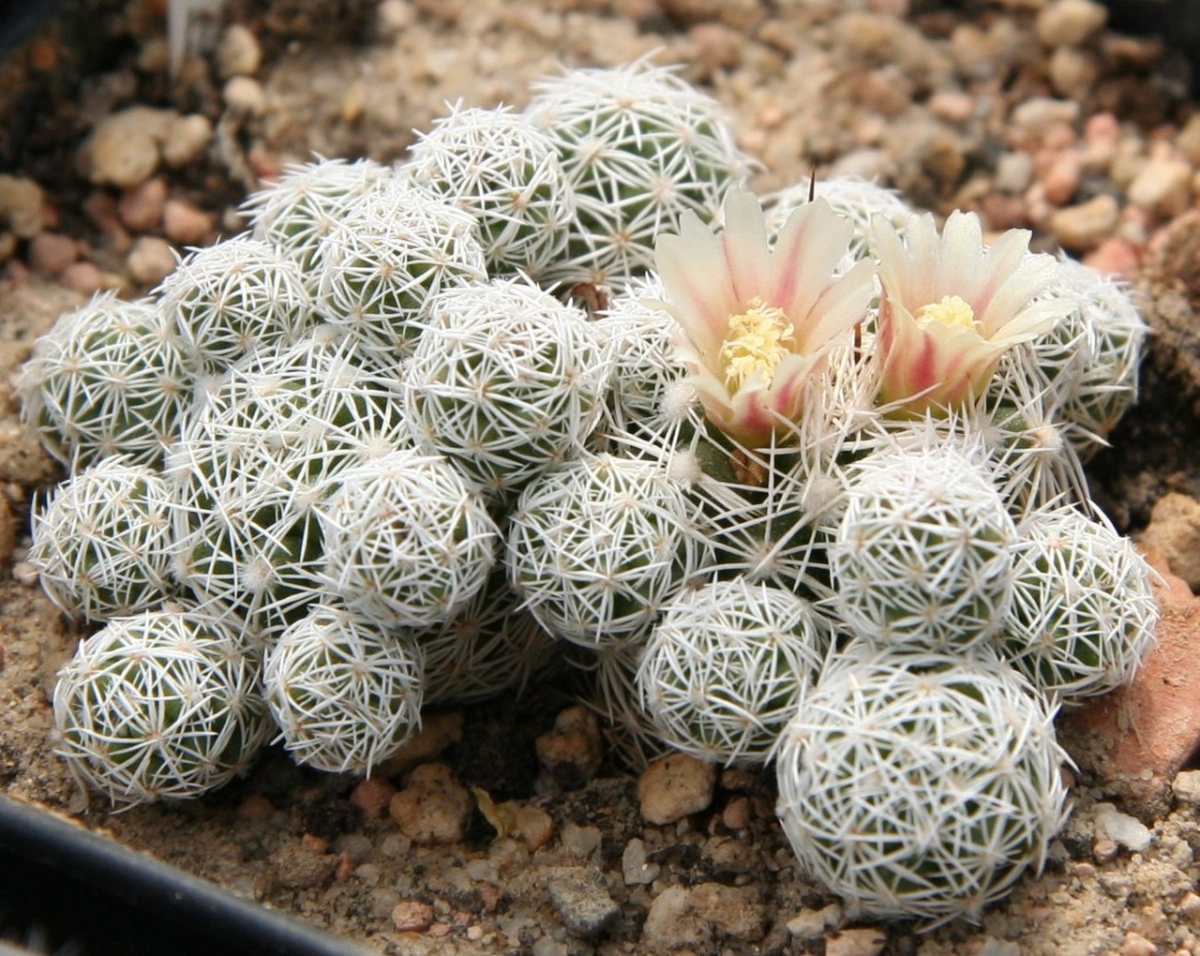
Image - Wikimedia / Michael Wolf
La Mammillaria gracilis o old It is a small cactus, which reaches a height of 13 centimeters maximum. Its stems are bluish-green, and it has white spines., except for the upper part which are black. It produces white flowers which sprout forming a crown.
sedum palmeri
El sedum palmeri is a crass or non-cactus succulent that forms rosettes of green leaves which sprout from stems about 10-20 centimeters long. In spring it produces yellow flowers grouped in inflorescences.
We hope that now it will be easier for you to differentiate succulents from other succulent plants.
